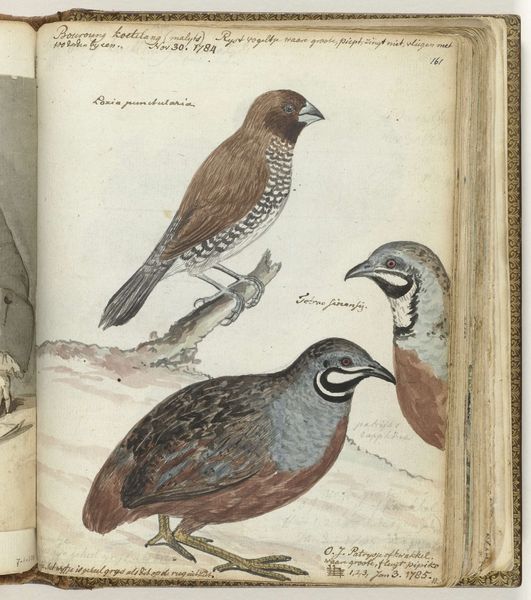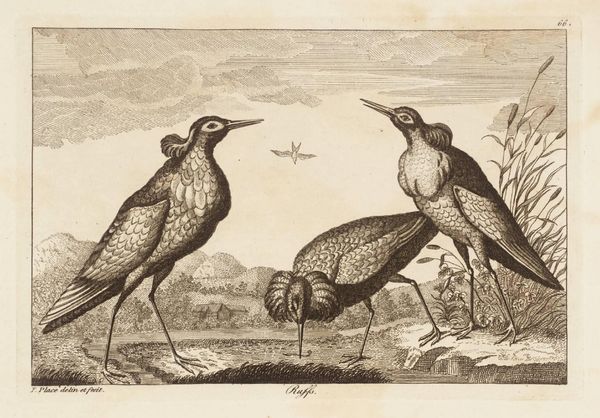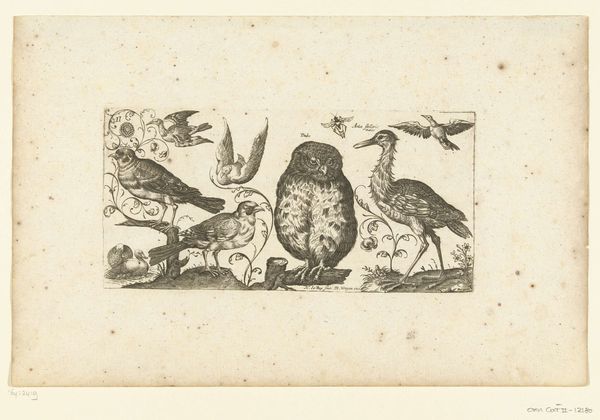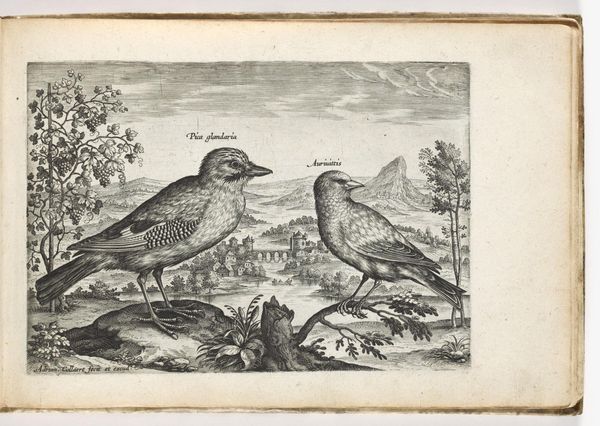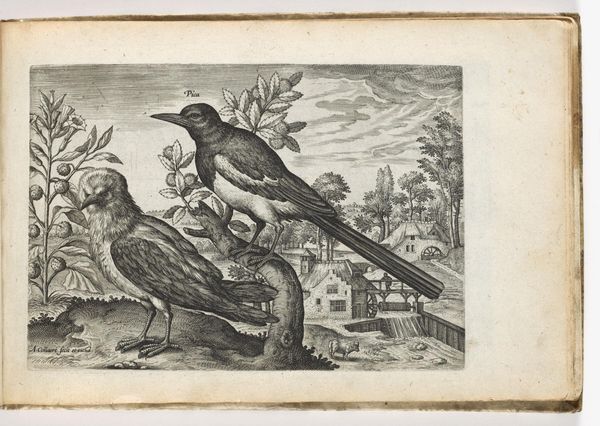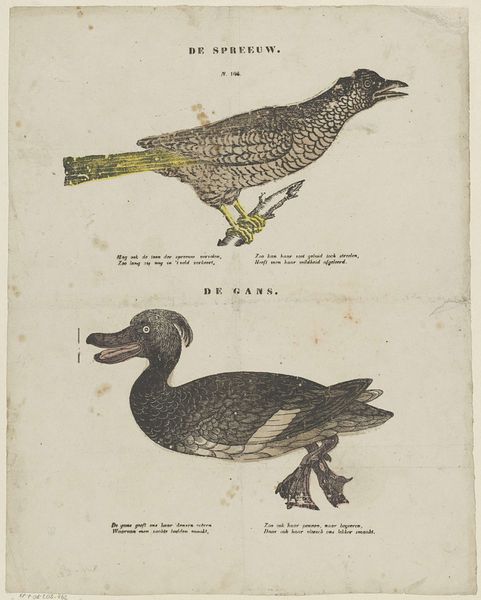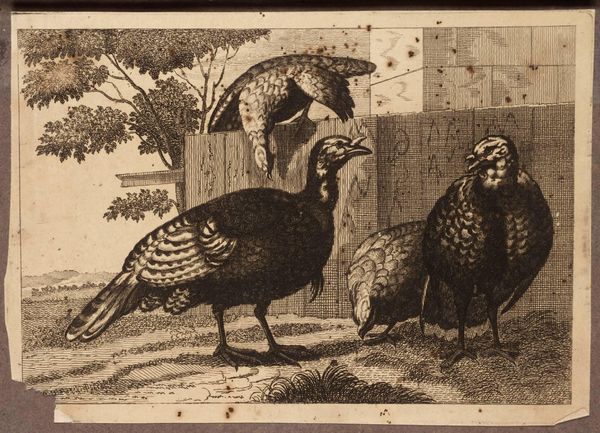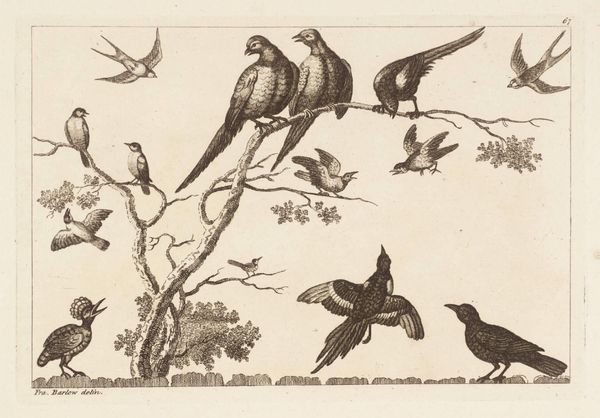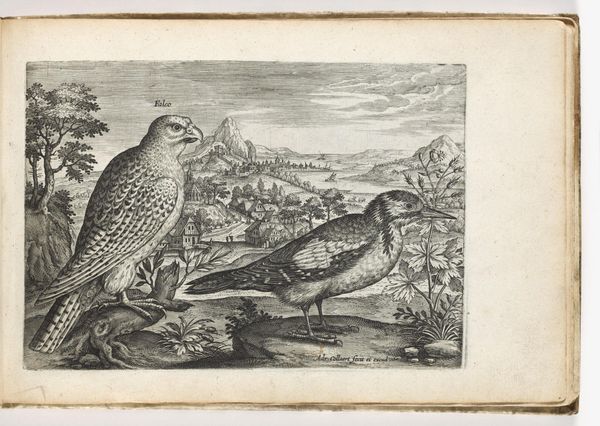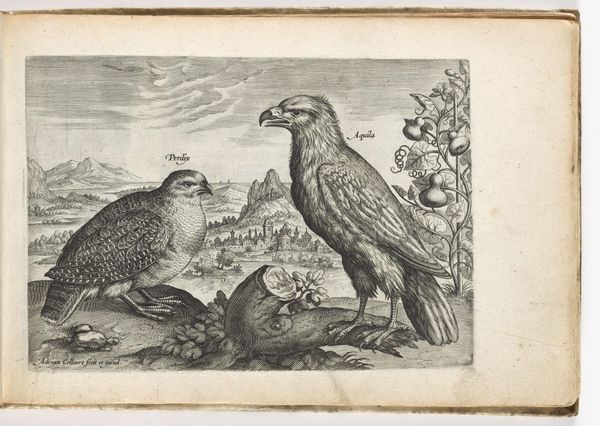
drawing, watercolor
#
drawing
#
water colours
#
mannerism
#
watercolor
#
botanical drawing
#
botanical art
#
watercolor
Dimensions: page size (approximate): 14.3 x 18.4 cm (5 5/8 x 7 1/4 in.)
Copyright: National Gallery of Art: CC0 1.0
Joris Hoefnagel made this watercolor and gouache painting of a curlew and crow with a horse skull, sometime before his death in 1600. The artist came from a family of merchants in Antwerp, now in Belgium, and as such his natural history illustrations were tied to his social position and education. The painting comes from a time when the scientific study of the natural world was growing fast and new institutions such as botanical gardens and natural history museums were being founded. The Latin texts included on the page reveal the artist’s educated audience and speak to a classical and humanist tradition. The depiction of the birds alongside a skull, and the texts themselves, suggests the artist was interested in moralizing on death and decay. To understand the meaning of this painting more fully, we might want to look at the artist’s biography or consider the relationship between art and science in the sixteenth century. Through this research, we can learn about the cultural context that shaped Hoefnagel’s imagery and how it connects to the social and intellectual life of his time.
Comments
No comments
Be the first to comment and join the conversation on the ultimate creative platform.
